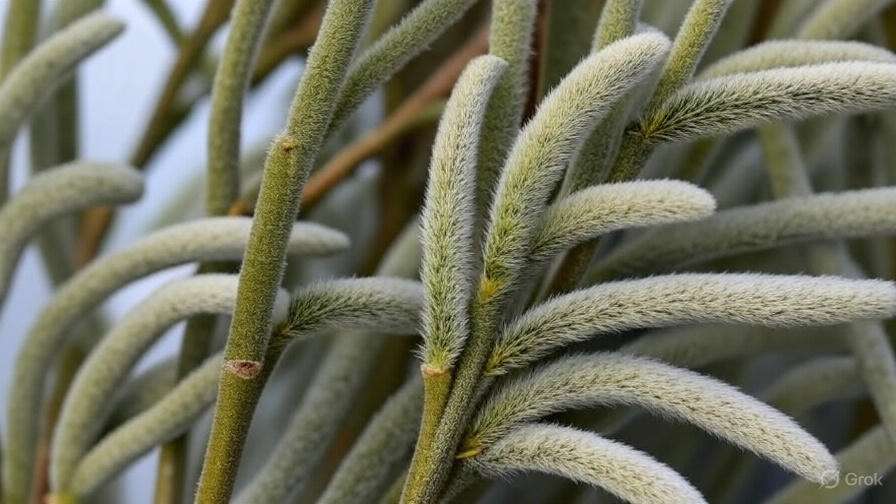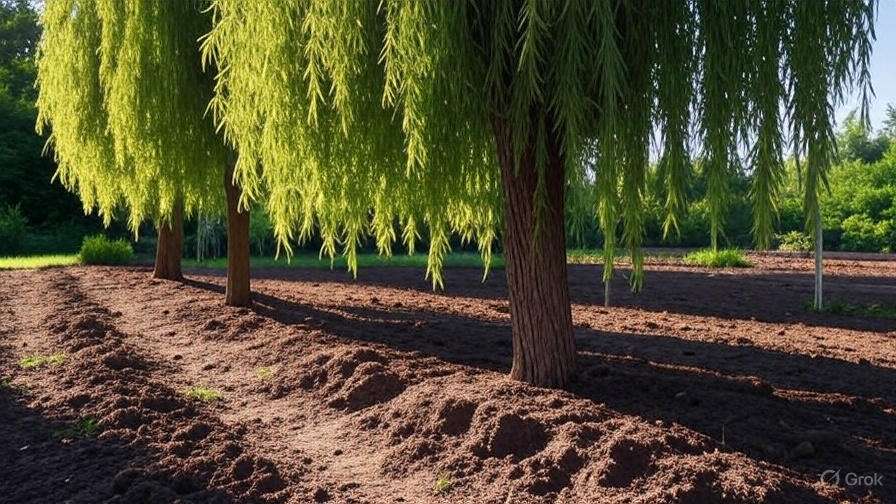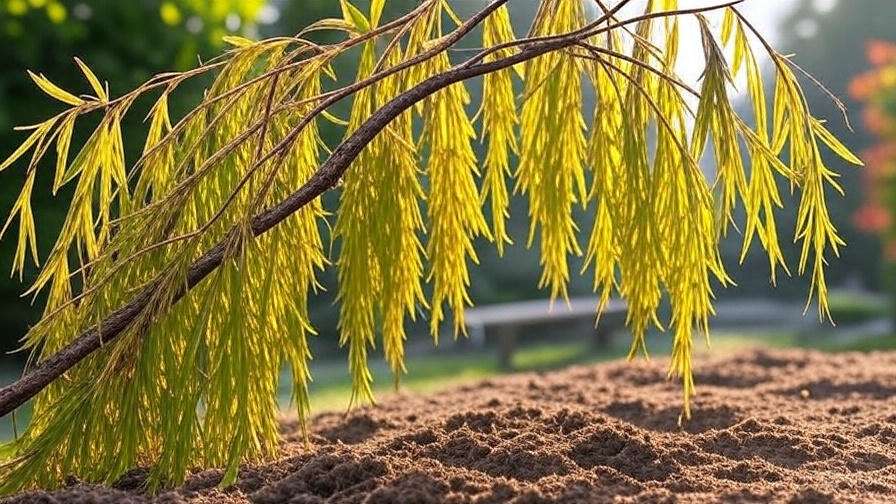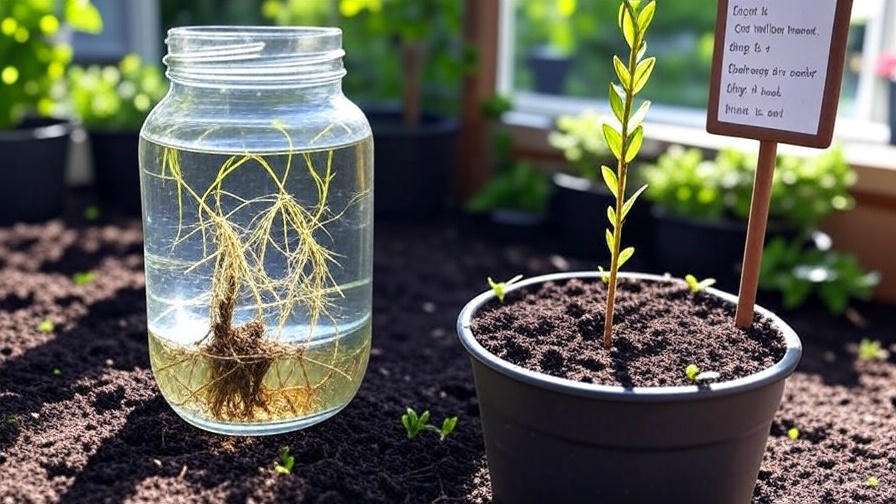
How to Care for Willow Branches: Essential Tips for Healthy Growth and Maintenance
Willow branches are not only beautiful but also versatile, whether you’re using them in your garden, crafting projects, or simply admiring their natural beauty. However, if you’ve ever struggled to keep your Willow stems healthy and thriving, you know that proper care is essential. 
But don’t worry! In this guide, we’ll walk you through everything you need to know about caring for willow branches, from basic upkeep to troubleshooting common issues. With our expert tips, you’ll be able to enjoy healthy, vibrant Willow stems that will flourish for years to come. Keep reading to uncover the best practices for nurturing your willow branches and keeping them at their best!
Table of Contents
ToggleWhat Are Willow Branches? 
Willow stems are the long, flexible stems of willow trees (Salix species), known for their graceful appearance and unique texture. These branches are most commonly associated with their use in crafting, landscaping, and gardening.

Key Characteristics:
- Flexible and Long: Willow stems are highly flexible, making them perfect for weaving and crafting projects. They can stretch to impressive lengths and can bend without snapping.
- Greenish-Brown Color: In their natural state, willow branches are a greenish-brown, which can sometimes take on a slightly reddish hue, especially when exposed to sunlight.
- Soft Texture: The surface of Willow stems is smooth and soft, with a velvety feel, making them easy to handle when crafting or pruning.
Common Uses:
- Crafting and Weaving: Willow branches are commonly used in basket weaving, fences, and furniture. Their flexibility allows artisans to create intricate designs.
- Landscaping: Willows are often planted near water sources because they thrive in moist conditions. The branches are used in garden designs to add natural, rustic touches.
- Plant Propagation: Willows can propagate easily from cuttings, and using healthy branches for new plantings is a popular method.
Understanding Willow stems and their versatile nature is key to providing the right care. Whether you’re using them for creative projects or simply maintaining willow trees in your garden, knowing the basics ensures your branches stay strong and healthy!
Why Willow Branches Need Special Care 
Willow stems are beautiful, but they require a bit more attention than your average tree. If you’re growing willow trees in your garden or landscape, understanding why these branches need special care will help you nurture them properly. Let’s break it down in simple terms:
1. Soft and Fragile Branches
Willow branches are known for their flexibility and softness, which makes them more susceptible to breakage, especially during storms or high winds. Unlike sturdier branches, willows don’t have as much strength to withstand harsh weather. Regular pruning and careful management can help prevent damage, ensuring the branches stay healthy and strong.

2. Prone to Disease
Willows, like other trees, can be vulnerable to pests and diseases, especially when their branches aren’t properly maintained. Issues such as willow rust, black canker, or aphid infestations can weaken the branches and cause them to die off. Keeping the branches clean and trimming away any infected parts reduces the chance of these diseases spreading.
3. Rapid Growth Requires Regular Maintenance
Willows grow fast—often up to 6 feet per year! While this rapid growth is a sight to behold, it also means that the branches can become dense and overgrown, blocking sunlight from reaching the inner branches. This can stunt the tree’s overall health and appearance. Regular pruning helps manage the size and shape, allowing the tree to breathe and thrive.
4. Water Dependency
Willows are water-loving trees, and their branches need constant hydration to remain healthy. If the soil around your willow tree dries out, it can stress the branches, leading to wilting or even leaf drop. To keep the branches lush and vibrant, ensure the tree is planted in moist soil or close to a water source.
5. Sensitivity to Environmental Changes
Willows are sensitive to changes in their environment, particularly in the areas around their branches. Moving a willow tree or planting it in a spot with inconsistent sunlight or temperature can cause stress. To prevent damage, plant willows in locations where their branches will get plenty of sunlight and can grow freely without obstruction.
By giving your Willow stems the care they need, you’ll help them thrive and maintain their graceful beauty throughout the seasons. Follow these tips, and you’ll be on your way to a healthy, vibrant willow tree that brings elegance to your landscape!
Best Practices for Growing Healthy Willow Branches
If you’re looking to grow strong and healthy willow branches, you’re in the right place! Willows are a fantastic choice for both beginners and experienced gardeners due to their fast growth and low-maintenance nature. Here are some key practices to ensure your Willow stems thrive:
1. Choose the Right Location 
Willows love sunlight! Make sure you plant them in an area that receives full sun for at least six hours a day. The more sunlight, the better their growth. However, they are also quite adaptable to various soil types. Just ensure the soil is well-drained and not too dry, as willows thrive in moist environments.

2. Water Regularly 
Willows are water-loving plants, so consistent moisture is crucial, especially during hot or dry periods. Water the soil deeply to keep it moist, but be careful not to overwater and let the roots sit in water for too long. A good rule of thumb is to water when the top inch of soil feels dry. In rainy seasons, you can reduce watering.
3. Prune for Strong Growth 
Pruning Willow stems regularly helps maintain their shape and promotes new, healthy growth. Remove dead or damaged branches, and trim the tips to encourage branching. The best time to prune willows is during late winter or early spring when the plant is still dormant. This prevents sap loss and gives the tree a fresh start.
4. Provide Nutrients 
Fertilizing willow trees once a year can give them the boost they need to grow vigorously. Use a balanced, slow-release fertilizer to feed them in early spring. This helps them grow strong, healthy branches. If you notice yellowing leaves, it could be a sign of nutrient deficiency, so consider adding compost or organic matter around the base.
5. Control Pests and Diseases 
Though willows are generally pest-resistant, they can still attract aphids, caterpillars, and other pests. Regularly inspect your willows for signs of infestation, like discolored or damaged leaves. Use organic pesticides or simply prune off the affected branches. Also, check for fungal infections—good air circulation can help prevent these issues.
6. Mulch Around the Base 
A layer of mulch around the base of your willow tree can help conserve moisture, suppress weeds, and regulate soil temperature. Use organic materials like bark or straw, and spread a 2-3 inch layer. Avoid piling mulch directly against the trunk to prevent rot.
7. Support Young Willows 
Young willows may need some extra support as they grow, especially if planted in a windy area. Use stakes to support the main trunk, but make sure the ties aren’t too tight to avoid damaging the bark.
By following these simple steps, your Willow stems will be off to a healthy start! Whether you’re using them for landscaping or as a beautiful addition to your garden, these best practices will help ensure your willow trees thrive for years to come.
Troubleshooting Common Problems with Willow Branches 
Willow branches are beautiful and resilient, but like any plant, they can face some common issues that may affect their health. Here are some practical tips for troubleshooting and resolving problems with your willow branches, ensuring they stay strong and vibrant.
1. Yellowing Leaves 
Yellow leaves are often a sign of stress, and they can be caused by a few different factors:
- Overwatering: Willows thrive in moist soil, but too much water can suffocate their roots and lead to yellowing. Make sure your willow is planted in well-draining soil, and avoid waterlogging.
- Nutrient Deficiency: Willows need a good supply of nutrients. If the leaves are yellow with green veins, it could indicate a lack of nitrogen. Fertilizing with a balanced fertilizer can help restore the green color.
- Pests: Aphids and other insects can suck the sap from the leaves, causing them to yellow. Regularly inspect for pests and use an insecticidal soap if necessary.

2. Wilting Branches 
If your Willow stems are wilting, it may seem like they’re thirsty, but overwatering could also be the issue.
- Underwatering: During dry spells, willows need frequent watering. Ensure the soil remains consistently moist, but not soggy. Water deeply, especially during hot months.
- Root Damage: If the roots have been damaged by pests or poor soil conditions, they might struggle to deliver water to the branches. Inspect the base of the tree for any signs of root rot or fungal growth.
3. Brittle or Broken Branches 
Brittle or broken willow branches are often a result of weak wood or physical damage.
- Improper Pruning: Avoid cutting willow branches at the wrong time of year. Prune during late winter or early spring to prevent stress on the tree.
- Wind or Storm Damage: Willows are prone to breakage in strong winds due to their flexible branches. If possible, protect them with windbreaks or prune regularly to remove weak branches that might snap.
4. Fungal Diseases 
Fungal infections like rust and mildew can appear on Willow stems, especially in humid conditions.
- Prevention: To reduce the risk of fungus, ensure the willow is planted in a location with good airflow. Prune dead or damaged branches regularly to improve air circulation.
- Treatment: If you notice any signs of mildew or rust, treat the tree with a fungicide. Be sure to follow the instructions and reapply as needed.
5. Pests 
Willows can attract a variety of pests, including aphids, caterpillars, and scale insects.
- Inspect Regularly: Look closely at the underside of leaves and branches for pests. Regular inspection helps catch the problem early before it spreads.
- Natural Remedies: If you spot pests, consider using natural insecticidal soaps or introducing beneficial insects like ladybugs to control the pest population.
Final Thoughts 
By staying on top of these common issues and taking the right preventive measures, you can keep your Willow stems healthy and flourishing for years to come. If you encounter problems, don’t be discouraged—most can be solved with a little care and attention. Happy gardening!
How to Propagate Willow Branches
If you’re looking to grow new willow trees or expand your garden, propagating Willow stems is a simple and rewarding process! Willow trees are known for their fast growth and ability to thrive in various conditions. Here’s a step-by-step guide on how to propagate Willow stems successfully:
1. Choose the Right Willow Branches 
Start by selecting healthy, young Willow stems from an existing tree. Look for branches that are flexible, green, and free from disease. Avoid old or woody branches, as they may not root as easily.

2. Cutting the Willow Branches 
To make your cutting, use sharp garden scissors or pruning shears. Cut the branch into 6-10 inch (15-25 cm) sections. Each cutting should have at least one or two buds on it. The cut should be made just below a bud to encourage rooting.
3. Prepare the Cuttings 
Remove any leaves or side shoots from the lower half of the cutting, leaving just the top part with a few buds. This helps the cutting focus energy on growing roots instead of sustaining leaves.
4. Rooting Hormone (Optional) 
For faster rooting, dip the bottom of the cutting into rooting hormone powder. This isn’t a necessity, but it can help speed up the process, especially if you’re propagating in less-than-ideal conditions.
5. Plant the Cuttings 
Place the willow cuttings in a pot filled with well-draining soil or directly into the ground, depending on your space and preference. Insert the cuttings about 2-3 inches (5-7 cm) deep into the soil, making sure the bottom part is in contact with the soil. Water them thoroughly after planting.
6. Create the Right Environment 
Willow cuttings root best in a humid environment. To help keep moisture around the cutting, cover the pot with a plastic bag or a clear plastic dome, but make sure there’s enough ventilation to avoid mold buildup. Place the cuttings in a location with indirect sunlight to encourage healthy growth.
7. Watering and Care 
Keep the soil consistently moist but not soggy. Water the cuttings whenever the soil begins to feel dry, but make sure the pot or soil drains well to prevent rot. Check the cuttings regularly for new root growth. This can take anywhere from a few weeks to a couple of months.
8. Transplanting 
Once you notice that the roots have developed (gently pull on the cutting to check), it’s time to transplant the willow saplings into their permanent spots. Choose a sunny spot with moist, well-drained soil for the best results.
Bonus Tip: Using Water Propagation 
Another simple method to propagate Willow stems is by placing the cuttings directly in a jar of water. Change the water every few days to keep it fresh. Once you see roots forming, you can transfer the cutting to soil.
By following these steps, you’ll be well on your way to propagating healthy willow trees that will thrive in your garden for years to come. Happy planting!
Creative Ways to Use Willow Branches 
Willow branches are not just for landscaping—they can be transformed into beautiful, practical creations for your home and garden! Whether you’re a DIY enthusiast or just looking for unique ways to repurpose natural materials, Willow stems offer endless possibilities. Here are some creative ways to incorporate them into your life:
1. Create Beautiful Willow Baskets 
One of the most popular uses for Willow stems is weaving them into baskets. Their flexible nature makes them ideal for crafting sturdy, functional baskets. You can use these baskets for everything from storing toys, magazines, or firewood to creating decorative pieces for your home. Plus, it’s a fun project for beginners!
How-to Tip: Soak the Willow stems in water for a few hours to make them more pliable before weaving. This will prevent them from snapping while you work!

2. Make a Rustic Trellis for Climbing Plants 
Willow stems are perfect for building a natural trellis that blends seamlessly into your garden. Use them to support climbing plants like peas, beans, or ivy. The rustic aesthetic of willow adds an organic charm to your outdoor space.
How-to Tip: Secure the branches to upright posts, and cross them at intervals to create a sturdy support system. This simple project will give your plants something beautiful to grow on!
3. Craft Willow Wreaths for Seasonal Decor 
Willow stems make stunning wreaths that are perfect for seasonal decorations. Whether you’re celebrating spring with fresh flowers or winter with pinecones and berries, a willow wreath can be a beautiful, rustic centerpiece for your door or table.
How-to Tip: Form the branches into a circular shape and secure them with floral wire. You can add greenery, flowers, or even lights for a personalized touch.
4. Design a Willow Fence for Your Garden 
If you’re looking for a natural boundary or privacy fence, willow branches can be used to create a stylish and eco-friendly garden fence. The branches are perfect for weaving between posts, creating a charming, sustainable barrier that’s both functional and attractive.
How-to Tip: Secure the Willow stems horizontally between evenly spaced posts for a whimsical, yet sturdy garden fence.
5. Use Willow for Outdoor Furniture 
For a unique, nature-inspired seating arrangement, use Willow stems to craft simple outdoor furniture like chairs or benches. The flexibility of the branches makes them great for creating curved, flowing designs, adding a rustic touch to any patio or garden.
How-to Tip: Incorporate willow branches with other materials, like wood or metal, for a more durable structure. These DIY pieces are sure to impress guests and add character to your outdoor living space!
6. Create a Natural Archway for Special Events 
Willow stems are perfect for creating an elegant archway for weddings, garden parties, or any special event. Their bendable nature makes them ideal for forming graceful, sweeping arches that will frame the occasion beautifully.
How-to Tip: Use multiple willow branches to form the base of the arch, securing them to tall posts. You can enhance the look by adding fabric, flowers, or fairy lights!
With a little creativity, Willow stems can be transformed into functional and decorative pieces that enhance your living space. Whether you’re crafting for practicality or beauty, these ideas make it easy to incorporate the natural charm of willow into your daily life.
Conclusion
Caring for Willow stems doesn’t have to be complicated! With the right knowledge and techniques, you can ensure your Willow stems remain healthy, vibrant, and full of life. From proper watering and pruning to troubleshooting common issues, these essential tips will help you nurture your Willow stems and keep them looking their best. Whether you’re growing them for landscaping, crafting, or simple enjoyment, willow branches offer endless possibilities when cared for properly.

Now that you know the best practices for willow branch care, you can confidently create stunning landscapes and beautiful crafts that will last for years. 
Frequently Asked Questions(FAQ)
How often should I water my willow branches?
Willow branches prefer consistently moist soil but should not be waterlogged. Water them deeply and regularly, especially during dry periods. Ensure the soil drains well to avoid root rot.
What is the best time to prune willow branches?
The best time to prune willow branches is during late winter or early spring, before new growth starts. Pruning during this period helps maintain their shape and encourages healthy new shoots.
Can I propagate willow branches from cuttings?
Yes, willow branches are easy to propagate. Simply cut a healthy shoot about 6-8 inches long, place it in water or moist soil, and wait for roots to form. Willow cuttings typically root quickly, often within a few weeks.Lorem ipsum dolor sit amet, consectetur adipiscing elit. Ut elit tellus, luctus nec ullamcorper mattis, pulvinar dapibus leo.
Why are my willow branches turning yellow?
Yellowing branches can indicate overwatering or a lack of nutrients. Check for good drainage, and ensure your willow is not sitting in standing water. You may also need to apply a balanced fertilizer to promote healthy growth.
Are willow branches susceptible to pests or diseases?
Yes, willow branches can be affected by pests like aphids and willow beetles. They can also suffer from fungal diseases like powdery mildew. Regularly inspect the branches and treat them with organic insecticides or fungicides if needed.
How do I prevent my willow branches from breaking?
Willow branches can be fragile, especially in strong winds. To prevent breakage, provide proper support by staking or tying them, especially during storms. Pruning excess weight can also reduce the risk of breakage.
Can willow branches be grown indoors?
Willow branches can be grown indoors in large pots, provided they get enough sunlight and are watered regularly. However, they need a lot of space, so be sure to place them in a spot where they can grow comfortably.
What is the ideal location for planting willow branches?
Willow branches thrive in full sunlight and moist, well-draining soil. They do well near water sources like ponds or streams but should not sit in stagnant water. Choose a location with plenty of space for growth, as willows can become quite large.




